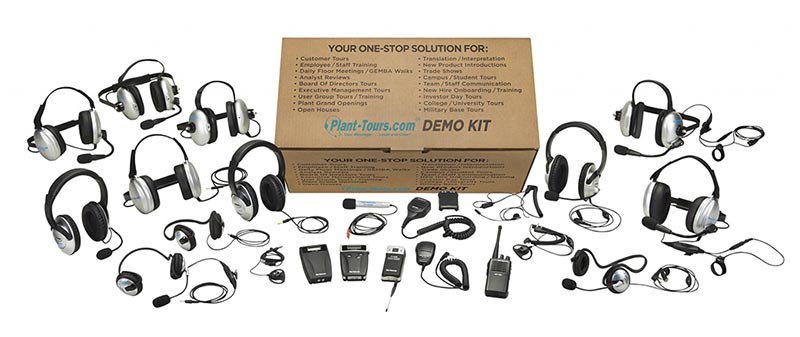When you think about the concept of communication, you probably just think of it as two parties exchanging information. That’s generally what the concept is, but it has specific components to it, including process, understanding, sharing, and meaning. Each of those four elements must be in place for communication to be complete.
Modern communication can be characterized as analog vs. digital communication. Each has its own pros and cons, and they differ in many ways.
Analog is an older form of communication with limited but still relevant uses. The limits of digital communication are still being pushed. Just looking at them on a graph, you might notice that they have different types of signals. An analog continuous signal looks like a sine wave, while a digital signal for data transmission looks like a square wave. While sine waves occur naturally, square waves do not.
Analog is defined as the technology by which information is represented through physical quantities that are continuously variable. Digital is defined as storing or recording information in binary code, using the numerals 0 and 1 to demonstrate whether the signal is absent or present. If you are responsible for choosing how people in your business communicate, it’s helpful to know the differences between analog and digital communication.
What Is Analog Communication?
One of the first uses of point-to-point analog communication developed in the 1800s with the telegraph. In turn, its use of multiplexing to send multiple signals of information contributed to the development of the telephone system. Analog communication systems grew in popularity around the world in the 1930s. One common use of an analog signal was two-way communications. The business sector adopted this technology with enthusiasm for many industrial applications. The aviation industry certainly grew to use it for the transmission of information. Many households first used analog communication for enjoying radio at the time and television in subsequent decades.
As the technology matured, however, it quickly hit its limits. Room for advancement and innovation quickly ran out. Future advances in communication technology would wind up involving digital transmission although analog communication systems are in prevalent use to this day.
Advantages
Analog communications obviously came before their digital counterparts, but they did offer specific benefits. For one, signal processing is generally a lot simpler for analog. In many cases, they’re the better choice for the transmission of audio and video. With higher density, they’re able to present information that’s more refined. At the same time, they use less bandwidth compared to digital signals’ high bandwidth. While both kinds of communication rely on the use of an electrical signal, analog systems have lower sensitivity to electrical tolerance. They also have more precision in representing changes in a variety of physical phenomena, including pressure, position, temperature, sound, and light. They don’t have the same electrical tolerance sensitivity as corresponding digital systems.
Examples
Despite the relative explosion of digital communications and digital electronics, there are some legacy technologies that still use analog signal modulation rather than digital modulation, and many of them require a demodulator for signal reception and communication. Telephones, tour guide systems, image and temperature sensors, audio recordings and reproductions, control systems, and radio signals are all instances where analog communication is still around, even with digital variations present as alternatives. One amplitude modulation drawback is that transmitting a continuous signal over long distances can increase the risk of signal disturbances.
Analog hardware is also more prone to observational errors than digital alternatives. However, there are some areas where digital has yet to compete with analog. For instance, even the best analog-to-digital converters can’t handle signal processing for certain high frequencies. Many digital encoders also rely on analog components and circuits to function. Similarly, a number of digital devices, such as thermometers, use an analog transducer to obtain data before encoding it into digital form.
What Is Digital Communication?
A digital communication system uses a digital signal to transmit information via discrete values instead of continuous values from a source to a destination. The digital data transmits through point-to-multipoint or point-to-point channels. Analog signal samples are taken and then quantized into a digital signal. The two states of digital signals are 0 or 1, representing On or Off. Following sampling and quantization, digital signals are modulated.
Digital Signals Encoding
Pulse code modulation (PCM) is the most common method for encoding analog signals. It involves three processes. PCM samples the analog sine wave at standard intervals. At each interval, it measures and chooses a value of amplitude to code into binary. This method better protects the data from noise and allows analog data to be transmitted on digital networks.
Repeaters intensify signals so that they can travel far enough to be received by suppressing noise signals. Since the values are discrete, continuously varying signals don’t let channel noise deteriorate the signal. This means the receiving end gets the original signal, regardless of distortion along the way.
Advantages
Digital transmission has many benefits over analog variants. For starters, participants can communicate with increased range and not have signals or sounds get “fuzzy.” Digital signals have greater noise immunity than analog. When an analog signal encounters waveform distortion, even a small amount affects reception.
Repeater stations allow digital signals to encounter more interference and still reach the receiving end without errors. Synchronization is one of the most common methods that coherent receivers use to process waveform data. It’s efficient, uses low bandwidth, and has better noise immunity. Human voice quality is considerably better, and that can result in lower error rates and better efficiency in company settings. Noise reduction and preservation are both very common qualities of digital communication. It’s also possible to deliver more information. Digital technology is often more flexible, simpler to use, and incredibly portable. Electronic devices that use digital modulation tend to be pricier than their analog counterparts but are becoming increasingly low-cost. Digital communication also allows for utilizing licensed portions of the RF spectrum.
Examples
Digital communication channels range from video conferencing to written communications. Many companies use digital systems internally for their intranet resources, including audio notes, email, project management, video conferences, and instant messaging. As some companies move to a work-at-home business structure, digital communication tools keep employees connected and productive. Some of those applications also fall into the external communications category that you find on the internet, where there are websites, social media, blogs, live chat, display advertising, and audio and video content.
Wireless technology is now in practically everyone’s pockets everywhere, but there can also be specific applications unique to certain environments. Some company locations have wireless tour guide systems that allow wireless communication to occur clearly and safely with people in places such as factory floors. It’s also seeing increasing importance in the healthcare field, where it’s used to interact remotely with patients, monitor medical devices from a distance, and transmit vital health information.
Comparison Between Analog and Digital Communication
Analog equipment is low cost compared to its digital equivalents, but there are limitations to how much data might be transmitted at one time. On the other hand, digital technology has considerably taken over the phone industry. The music industry has certainly been a battleground for the competition between analog and digital communications. MP3 files and streaming music are extraordinarily popular on electronic devices with many music fans, and yet physical records started outselling compact discs for the first time in decades not long ago. Digital communications require high bandwidth but less power. Digital hardware is also far more flexible in size, portability, and application. However, analog circuits are still necessary for some digital devices, and analog can transmit data at higher frequencies than digital. Many people still haven’t fully embraced digital electronics, though in some cases a decoder can convert a digital signal back to analog.
Conclusion
Analog and digital use different types of signals: digital signals use discrete values while analog signals use continuous values. Analog communications preceded digital versions for many decades. Both revolutionized the world in their own ways. Digital communication is generally superior in the transmission of information. It certainly comprises the dominant group of technologies, as much of the economy is now reliant on digital data and wireless communication in the always-online age. However, analog communications still have legacy applications. While many businesses use VoIP technology for phone communications due to the clarity of human voice transmission, a power or internet outage might take that offline whereas a traditional landline could be an emergency backup in a disaster. Going forward, digital will still dominate, but analog communications will remain in limited applications for quite some time.







